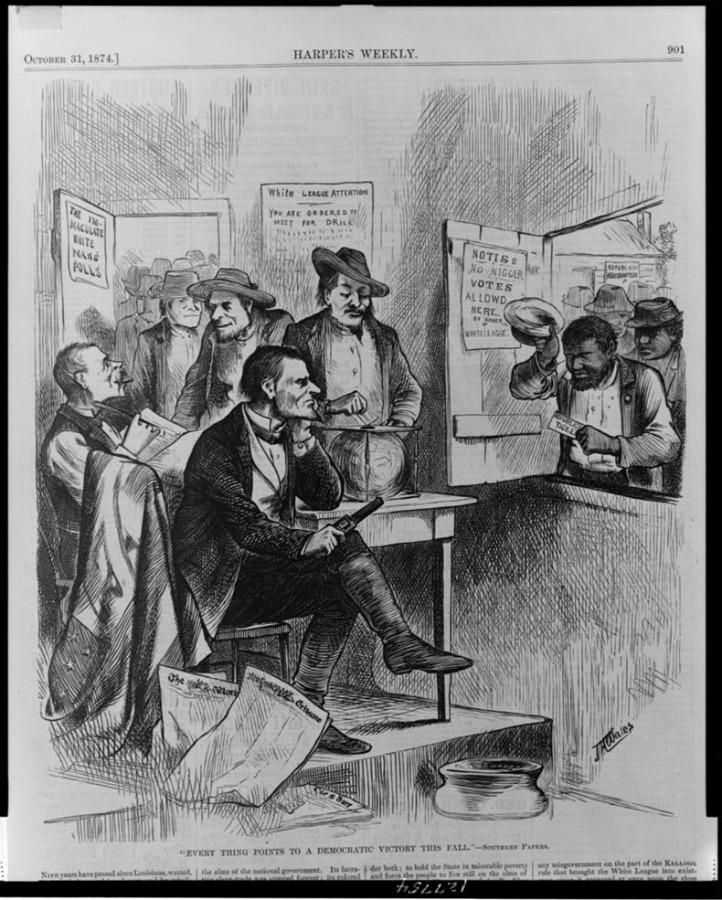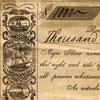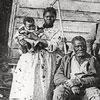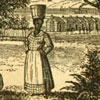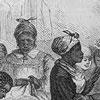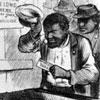Reconstruction was a time of significant change in Virginia. African Americans made important political gains. African American men voted in large numbers and were elected to political office. They were also elected as sheriffs, mayors, legislators, Congressmen, and Senators. Though their participation was significant, it was exaggerated by white southerners angry with “Black Republican” governments.
During the 1870s and 1880s, Democrats regained control in Virginia and systematically reversed the steps taken toward political and social equality during Reconstruction. Examine this 1874 illustration from the prominent political magazine Harper’s Weekly, which published in New York and supportive of Republican politicians who favored Reconstruction policies. What does it suggest about Democratic politics in the South?
Southern states denied African American voting rights through restrictions such as the poll tax, the grandfather clause, and literacy tests – as depicted in this illustration. Jim Crow laws separated blacks and whites in public spaces, such as restaurants, schools, theaters, railroads, and hospitals. The Supreme Court endorsed segregation in the landmark Plessy v. Ferguson case in 1896. African Americans continued to be victims of violence, intimidation, and lynching, especially with the rise of the Ku Klux Klan. Not until the Civil Rights Movement of the 1960s were African Americans granted full protection of the 14th and 15th amendments.
The period of Reconstruction was one of great promise for the U.S. and for African Americans. During this period, African Americans continued their struggle for freedom and worked to improve their communities, developing strong institutions, such as churches and schools. Though there were long-term consequences of Reconstruction’s failures, the Reconstruction era provided a Constitutional basis for later attempts to end discrimination.
Source: James Albert Wales, “Everything Points to a Democratic Victory This Fall – Southern Papers,” still image, 1874, Library of Congress, Prints and Photographs Division, accessed September 20, 2011.


